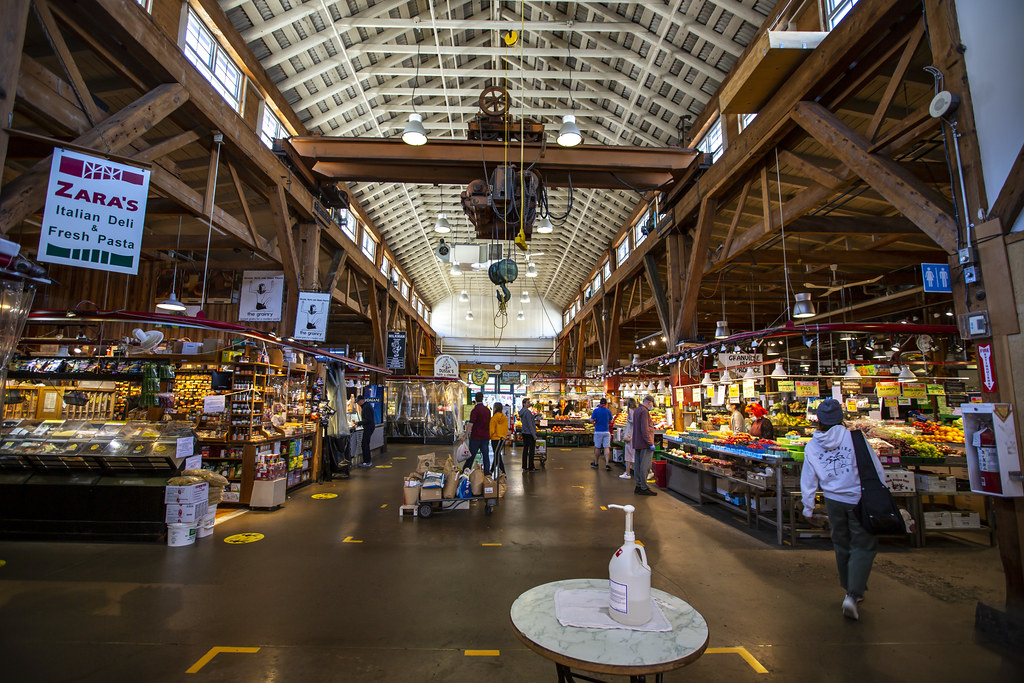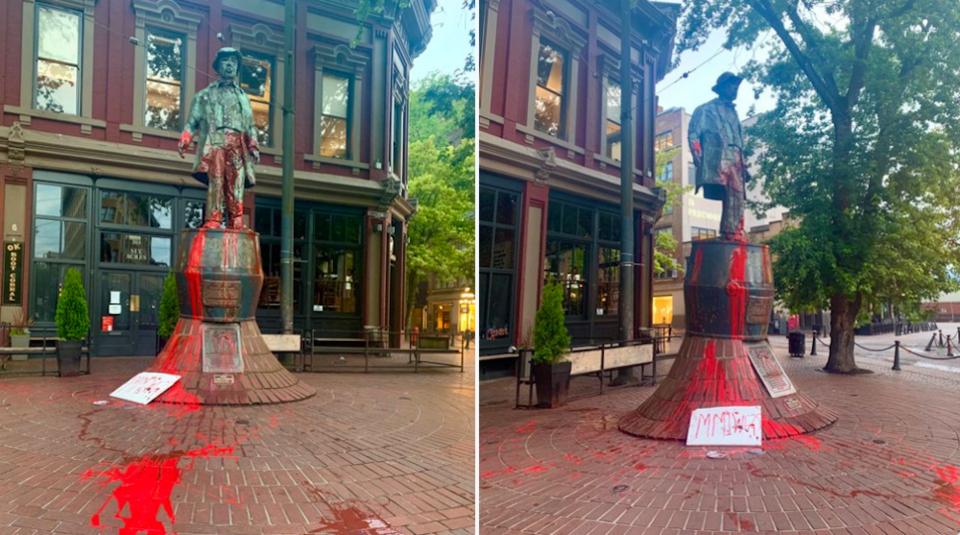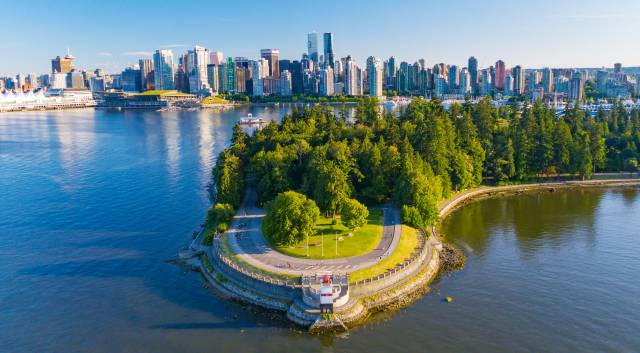How I came to visit Vancouver.
My recollection of the time I spent in Vancouver, BC is, as it has been with other cities to this point, somewhat sketchy. Here’s why: When I made my lone visit to the city it was both a destination and not a destination. Hence my stay was relatively brief. Vancouver was an add-on to the west coast portion of the three year baseball stadium tour I made in the mid to late nineties. The principal aim of that leg was seeing baseball games in Seattle, Oakland, San Francisco, Los Angeles, Anaheim, and San Diego. I actually started that trip with a game in Oakland then drove to the SoCal teams and while I was in San Diego, because I wanted to drive the entire length of the west coast of the U S, drove close to the border crossing at Tijuana but didn’t cross into Mexico.
I then made an about face and started north. This northbound trip included a two day stop in Portland (a city I liked immensely) on the way to Seattle. Here, I did plan to cross the border and spend a day or two in Vancouver. I crossed this border because while the Canadian border is only about 120 miles (195 kilometers) from Seattle (and Vancouver 20 or so miles beyond that) it’s six times the distance between San Diego and Tijuana so a drive with a u-turn seemed rather wasteful. Also, at that time, Americans didn’t require a passport to enter Canada. And frankly, Vancouver appealed to me more than Tijuana. So you see, while I had Vancouver as a planned overnight stay on that trip, it was really little more than an adjunct to the trip’s main purpose. So, both a destination and not a destination.
My midday confession.
I began writing these chapters in the fall of 2021 and I’m drafting this particular post on the first full day of astronomical winter. I’m delaying publication because I want to post them on a schedule considerably more consistent than my erratic writing schedule which is often delayed by my research for all the addenda and supplements. Other times, I have to dredge through the sediment burying the memories. Sometimes I’m simply distracted. In this case, even as I evoke these images, I’m peering through a dusty mental landscape obscured by windblown sediment.
Vancouver is the last city about which I have written nothing because the next city on the tour will be Beijing.┬Ā So, obscured as these decades old recollections are, let’s see what I can find below those layers of sediment.
Vancouver.
There’s an aerial photo of Vancouver on the website ski.com that looks like this:
[Photo from Destination Vancouver / Albert Normandin.]
As I was preparing to write this section the thought arose that one of my main impressions of the city was something of a smaller, more manageable Seattle. Even though I came to the city on the ground, I don’t recall this level of high-rise density but if such was the case, then in this way, it was more like Seattle than I remember.
The two coastal cities are all about water. Seattle sits on an isthmus between Puget Sound on the west and Lake Washington on its east and, since 1934, has been bisected by the Lake Washington Ship Canal. The photo above speaks to Vancouver’s abundance of water.
My first stop.
One thing I try to do whenever I visit a city for the first time is to walk as much as possible or practical and that was my plan for my day in Vancouver. As I recall, I skipped breakfast at the hotel because I planned one of those walks and then to take the ferry to the Granville Island Public Market. Having grown up in Baltimore with its famous Lexington Market (and public markets around the city) and having been in Seattle the day before with fresh memories of that city’s Pike Place Public Market, the exterior of the Granville Island Market
[Photo from papercitymagazine.]
looked like a cozier cousin of its Seattle counterpart. The interior was as lush and tempting as I imagined it would be. I’m sure I enjoyed that breakfast.
[Photo from Flickr].
I then took a different ferry to connect with the heart of the city and proceeded to Doctor Sun Yat Sen Classical Chinese Garden. I wanted to stop here because when I was in Portland a few days before I’d spent some time in their well-known Japanese Garden, I wanted to try to see the differences and similarities between the two styles. I immediately noticed that the Chinese garden had many more structures throughout when compared to a typical Japanese garden that’s generally more subdued and minimalist. The Chinese garden seemed to be wilder with less pruning than its Japanese counterpart with the latter presenting naturally occurring elements that have been adjusted or manipulated by man here and there.
[Photo from Wikimedia Commons – Daderot BY CC].
Next, it was on to Gastown and another echo of Seattle. Both cities have made an effort to preserve their history though they use slightly different methods. To trace much of Seattle’s early days you need to go underground because what was once street level is no more. In Vancouver the Gastown neighborhood – the city’s oldest – remains on the surface. It features a rather famous steam clock
[Photo from DestinationVancouver.]
and a statue of the city’s founder, John Deighton, better know as Gassy Jack (apparently for being loquacious not flatulent).
(Lest you think controversies over statues are confined to the United States, Gassy Jack’s statue in Vancouver was vandalized in 2020
[Photo from Vancouverisawesome.]
and faced calls for its removal. Here’s the likely reason:
Deighton ran a bar that catered to loggers and, from some reports, his establishment provided not only beer but served as an ersatz brothel that exploited native Squamish women. Deighton himself first married a Squamish woman but, when she died, the 42 year old “married” her 12 year old niece, Quahail-ya. There’s some indication that Quahail-ya was not a willing participant to the marriage. According to Squamish oral history, at age 15 the indigenous girl managed to run away from Deighton.┬Ā
{If you’re interested in hearing more about the indigenous women’s perspective, watch this video.})
My final stop was Stanley Park – a place where I could walk and rest, walk some more and spend some contemplative time while finishing my day reasonably close to the hotel. This is the city’s oldest public park. In fact, shortly after Vancouver’s incorporation in 1886, the first act of the City Council was petitioning the government to convert what had been a military reserve to use as a park.
[Photo from otmdroneservices.com.]
And that, my friends, is most of what I recall about my visit to Vancouver. See you at the Olympic Games.






